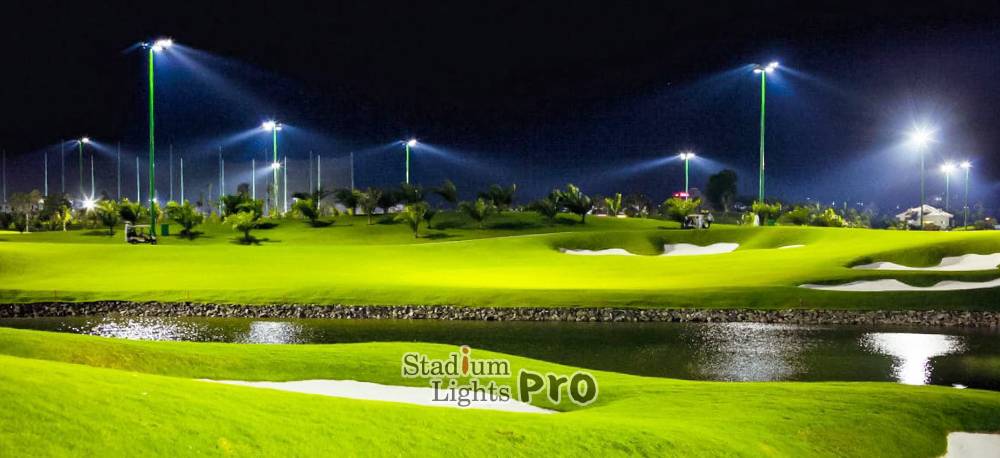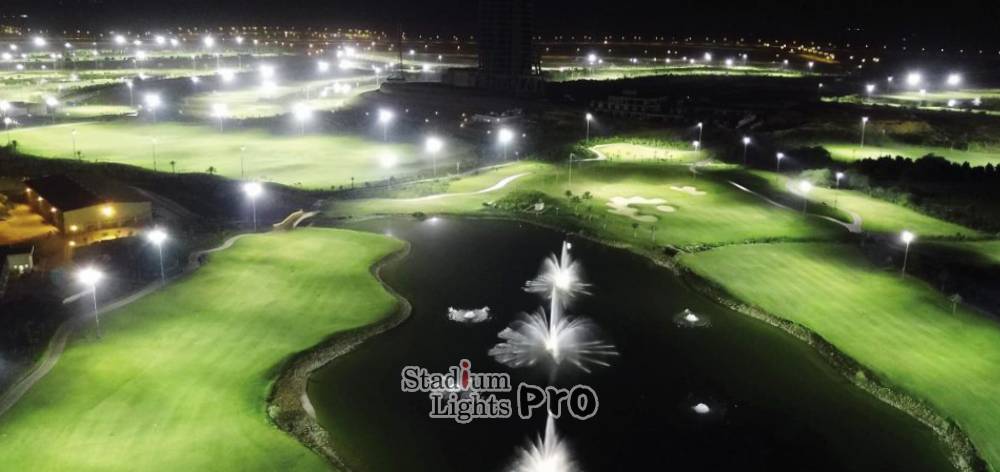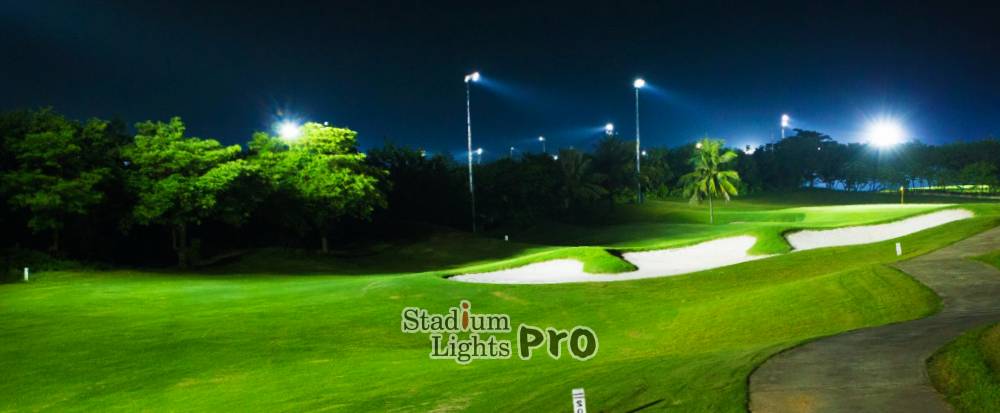Golf courses are environments that demand careful planning, both in terms of layout and the positioning of various elements such as light poles. Lighting plays an essential role in enhancing the golfing experience, whether it’s for late evening play, tournaments, or general safety. Properly positioning light poles is an intricate process that requires consideration of the course’s design, player needs, and the surrounding landscape. This guide explores the factors that influence light pole placement, the methods to optimize lighting coverage, and how to create an effective strategy for achieving the best possible results.

Table of Contents
ToggleUnderstanding the Need for Effective Lighting on Golf Courses
Lighting on a golf course goes beyond just ensuring players can see where they’re going—it’s about creating an environment that encourages enjoyment, safety, and performance. When the sun sets and the course transitions into the evening hours, the importance of good lighting becomes even more apparent. Properly designed lighting allows golfers to continue their rounds well into the night, helping to maintain the flow of play and ensuring safety. The strategic placement of light poles also minimizes shadows in critical areas, such as greens and fairways, where shadows could interfere with a player’s ability to judge the distance or trajectory of their shots. For tournaments or evening events, effective lighting can significantly enhance the visual appeal of the course, setting the stage for a memorable experience for players, spectators, and sponsors alike.
Beyond just aiding visibility, lighting can also transform the atmosphere of a golf course, giving it an inviting, immersive ambiance that enhances the overall golfing experience. In some cases, well-designed lighting systems can even add a unique aesthetic to the course, highlighting key features like water hazards, sand traps, or wooded areas. However, if the lighting layout is not planned carefully, golfers could face various challenges that affect their play. Poor lighting can create uneven visibility, leading to areas of the course being too dimly lit or blindingly bright. Shadows in critical spots may distort the course’s natural features, leading to confusion. Dark areas can also present safety hazards for both golfers and staff. This makes careful planning and thoughtful execution essential when it comes to lighting the course in a way that promotes both function and enjoyment.
Factors Affecting the Positioning of Light Poles
Proper light pole positioning is a key factor in ensuring that the course remains safe, functional, and aesthetically pleasing. Several considerations influence how and where light poles should be placed to achieve optimal lighting. By considering these factors in combination, designers can establish a lighting plan that balances visibility, efficiency, and the overall course layout. Each golf course has its own unique characteristics that demand a tailored approach to lighting design.
Golf Course Design and Layout
One of the primary factors influencing light pole placement is the design and layout of the golf course itself. Golf courses are typically divided into various zones, including fairways, greens, tees, roughs, and hazard areas like bunkers and water features. Each of these zones serves a different function, and the lighting needs of each can vary greatly. For example, fairways, being the most frequently traversed area by players, require a higher level of illumination to ensure clear sightlines, while roughs may require less intense lighting. However, even areas like roughs still need to be adequately lit to prevent players from losing sight of their balls or stumbling during their movements.
Greens and tees, which are more compact and concentrated areas of play, require focused lighting that minimizes shadows and highlights key details, such as the flagstick or the contours of the green. A thoughtful lighting design ensures that each area is sufficiently lit without overloading any single part of the course with excessive light. Proper pole placement should take into account the size of each area, its usage patterns, and the natural flow of play to ensure the light distribution is both efficient and effective. The goal is to avoid creating harsh contrasts in lighting, which could distract or disorient players, while still providing the right amount of illumination where it’s needed most.
Moreover, the layout of the course should be examined for potential challenges that could impact light pole placement. Water hazards, dense tree coverage, and uneven terrain all require strategic planning. For example, poles should be placed at a sufficient distance from water features to prevent glare or reflections that might disrupt a player’s view. Similarly, in areas with significant tree coverage, light poles may need to be positioned more frequently to ensure that shaded sections are properly illuminated. The interplay between the course’s natural features and artificial lighting must be considered to minimize any negative effects on gameplay or the aesthetic appeal of the landscape.
Local Climate and Environmental Conditions
The climate and environmental conditions of the course’s location have a significant impact on how lighting should be implemented. Courses situated in different regions face varying challenges related to weather, which can affect the way lighting is distributed and how durable the system needs to be. For instance, courses located in areas with frequent rainfall or fog should be designed with lighting that maintains clear visibility even in reduced conditions. In these scenarios, light poles may need to be spaced closer together to reduce dark spots, and the light itself should be intense enough to cut through fog or rain without creating glare.
Wind is another environmental factor that can influence light pole design. Golf courses located in windy areas may require more robust poles and fixtures that can withstand gusts and prevent structural damage. In regions with high winds, poles must be built with additional stability to avoid falling or swaying, which could not only cause issues with the light quality but also pose safety risks. Wind-resistant poles with sturdier construction, as well as fixtures designed to minimize wind resistance, help maintain the reliability and longevity of the lighting system.
Additionally, geography plays a role in designing a lighting system. For example, courses in coastal regions may experience more salt exposure, which can corrode poles and fixtures. In these cases, corrosion-resistant materials, such as marine-grade steel or aluminum, should be used to ensure durability. Similarly, courses located at higher altitudes may experience more extreme weather conditions, including heavy snowfall, which could affect pole placement and the type of lighting fixtures that are suitable. The lighting system must be adapted to the specific conditions of each golf course to ensure its effectiveness year-round.
Safety and Accessibility
Safety is always a primary consideration when designing lighting systems for a golf course. Golf courses, with their expansive layouts and varied terrains, can pose risks to players, staff, and visitors if not properly illuminated. Well-lit paths and walkways are vital for ensuring that players can safely navigate the course at night, especially in areas that may be uneven or difficult to traverse. Lighting on cart paths is especially important for golfers who rely on carts to move quickly from one hole to the next, helping them avoid accidents while maneuvering around turns or through potentially hazardous areas.
In addition to the course itself, the surrounding areas—such as parking lots, bridges, and spectator zones—also need to be properly lit. The lighting system should guide players, staff, and visitors safely from one location to another without creating confusing shadows or bright spots. Spectator areas, for instance, should be illuminated in such a way that people can gather comfortably without feeling overwhelmed by the light or distracted by excessive glare. Lighting near water features or hills should be carefully placed to avoid reflection or bright spots that could cause visual disruption.
Proper lighting on access roads and entrances is also important, as these areas must be easy to navigate, especially during evening events or tournaments. The poles should be strategically placed so that players, staff, and visitors can see obstacles or other hazards, such as curbs or barriers, without being blinded by overexposure to light. At the same time, the intensity of the light should be regulated to avoid causing discomfort to players while they are on the course or to spectators who are watching an event. By considering these safety aspects, the lighting system can help make the course safer and more accessible for everyone.
In sum, a well-executed lighting plan for a golf course serves much more than just functional purposes. It ensures safety and accessibility, supports the aesthetic qualities of the course, and provides golfers with a pleasant and comfortable environment to enjoy the game—whether during the day or well into the evening. Each factor, from course design and local weather conditions to safety needs and accessibility, must be carefully considered to create a cohesive lighting system that enhances the overall golfing experience.

Lighting Solutions for Golf Course Areas
Different sections of the golf course require unique lighting solutions based on their specific use and the amount of traffic they experience. Understanding how to light each area will make the course more enjoyable and safe for both players and visitors.
Lighting for Fairways
Fairways are the most significant and frequently played part of the course, requiring a balanced approach to lighting. The fairway lighting setup must offer enough brightness to cover the distance while minimizing the possibility of shadows. Light poles should be positioned in a way that allows light to reach the entire fairway, especially in longer holes, where the distance between players and light sources is greater.
A good approach to fairway lighting is placing light poles at strategic intervals along the course’s path. These poles should be tall enough to ensure that light distribution remains uniform without causing glare for golfers. In addition, the angle at which the light is projected should ensure that it illuminates the entire fairway without spilling over into the rough.
Lighting for Greens and Tees
Greens and tees are smaller areas that require more focused lighting to guide players in the game’s precise aspects. For greens, in particular, the lighting needs to be sharp and focused, as players need to clearly see the contours of the green and any potential obstacles. The light should also be arranged to avoid creating shadows or bright spots that could interfere with a player’s putting.
Tees, where players start each hole, should have adequate lighting to guide players in lining up their shots. The placement of light poles here is important to ensure that the beginning of each hole is easily visible, allowing players to accurately assess distances and align themselves before striking the ball.
Lighting for Pathways and Cart Paths
In areas where golfers travel on foot or by cart, lighting is required to ensure safe movement across the course. Cart paths, in particular, must be illuminated so that players can safely navigate through turns and potentially uneven terrain. Pathway lights should be placed at regular intervals along the course’s main routes to prevent any sudden dark spots.
These pathways may also be located near water hazards or wooded areas, so it’s important that lighting is not too bright or concentrated, which could create glare and reduce visibility. Light poles placed on these paths should be designed to provide gentle, even light, which is easy on the eyes while maintaining clear visibility.

Techniques for Optimizing Light Pole Placement
Proper placement of light poles is not simply about distributing them evenly across the course. There are specific techniques that can be used to achieve even lighting, minimize shadows, and avoid glare.
Utilizing Different Pole Heights
Different heights for light poles can help distribute light in various ways, depending on the area’s needs. Tall poles are often used to cover larger sections of the course, such as fairways or cart paths, while shorter poles are ideal for smaller areas like greens and tees. The height of the pole should be chosen based on the distance to be illuminated and the expected level of visibility needed in different parts of the course.
The use of varying pole heights ensures that the lighting coverage is efficient, reducing the need for excessive numbers of poles. A well-thought-out strategy can prevent the placement of poles in areas where they might obstruct views or become a safety hazard.
Combining Different Lighting Fixtures
While traditional lighting poles are often used on golf courses, more specialized lighting fixtures may be needed for certain areas. For instance, LED floodlights can provide a concentrated and adjustable beam of light for specific spots, such as tees and greens. For wider areas, such as fairways, a softer, more diffused light may be preferable to create an inviting atmosphere without overpowering the player’s vision.
Using a combination of different lighting fixtures can provide the flexibility needed to meet the varied demands of a golf course. Lighting can be designed to offer a balance between functional illumination and aesthetic appeal, enhancing the overall atmosphere while supporting the demands of the game.
Incorporating Smart Lighting Technologies
The use of smart lighting technologies is gaining popularity in outdoor spaces, including golf courses. These systems allow for greater control over light intensity, color temperature, and timing. By using sensors, lighting systems can automatically adjust the light levels based on the time of day, weather conditions, and foot or cart traffic. Such technologies can also be used to dim the lights when no activity is detected, which can save energy and prolong the lifespan of the lights.
Smart lighting can also contribute to the course’s maintenance, as it can detect when a light has failed and notify the staff immediately. This proactive approach helps maintain the course’s lighting without requiring constant manual monitoring.
How Landscape and Aesthetics Influence Light Pole Positioning
While the practical aspects of lighting are the main consideration for golf course lighting design, aesthetics also play a role in how the lighting is integrated into the course. Proper pole placement can enhance the natural beauty of the landscape and make the course more visually appealing during evening play.
Light poles should be strategically placed in a way that they complement the course’s natural features, such as water bodies, trees, and hills. The lighting should highlight the course’s unique characteristics while avoiding excessive brightness that could distract from the beauty of the landscape. Thoughtful placement of light poles can enhance the golfer’s overall experience, providing both functionality and visual appeal.
Maintaining and Updating Lighting Systems
Once the light poles have been positioned and installed, regular maintenance is required to ensure that the system continues to perform as expected. Periodic checks of the poles, wiring, and fixtures help prevent malfunctions and ensure consistent light quality throughout the course. Additionally, updating the lighting technology, such as switching to more energy-efficient LED bulbs, can improve both the performance and cost-effectiveness of the system.
A well-maintained lighting system supports the longevity of the course’s facilities and ensures that golfers continue to enjoy their experience, regardless of the time of day.
Conclusion
Effective light pole positioning is integral to creating an optimal golfing environment, where visibility, safety, and aesthetics align to enhance the overall experience. By carefully considering the layout of the course, the needs of the players, and environmental factors, a thoughtfully designed lighting plan can illuminate every corner of the course. From the fairways to the greens and cart paths, each area benefits from a tailored approach that ensures sufficient brightness, minimizes shadows, and creates an inviting atmosphere. Combining smart technologies, appropriate fixture choices, and regular maintenance ensures that the lighting system remains reliable and energy-efficient. The strategic placement of light poles not only facilitates better play but also contributes to the course’s visual appeal and long-term functionality.

